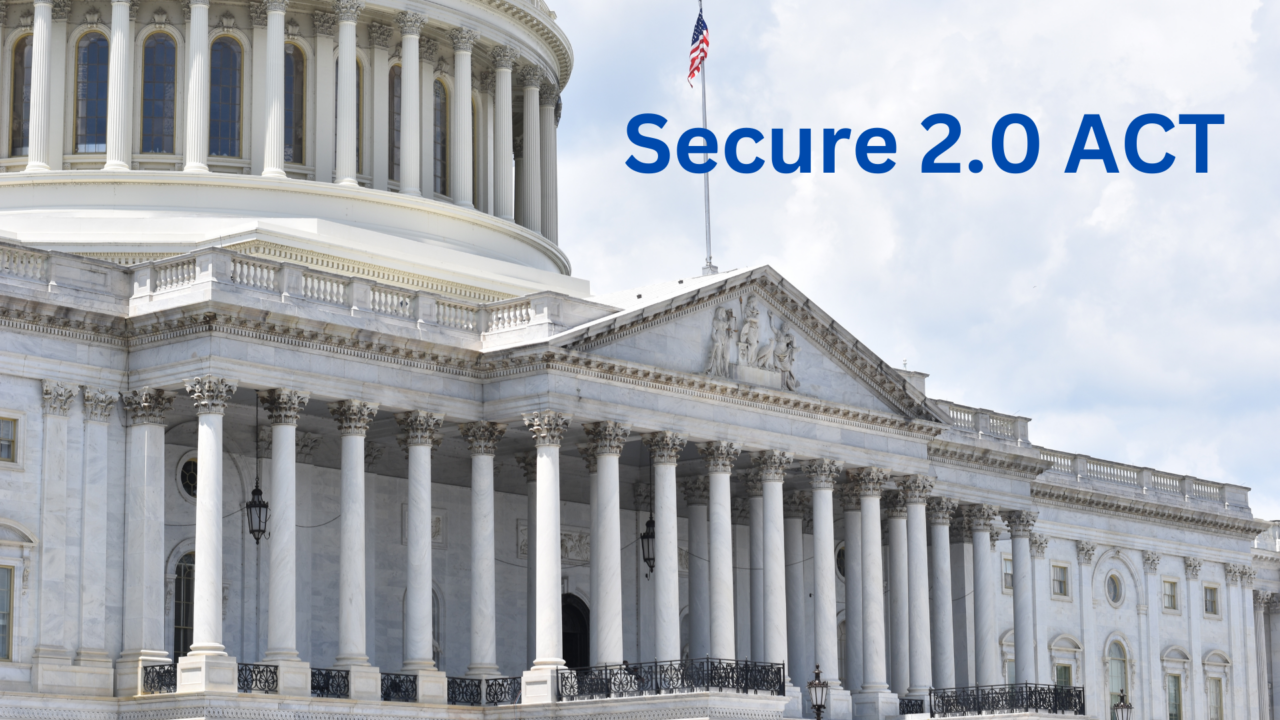Taking proactive steps to save for retirement when you’re young can drastically improve your financial health in later years.
Unfortunately, taxes and inflation frequently eat away at financial gains and rob people of their wealth later in life. To combat this, the government created special tax privileges for retirement accounts, such as Roth IRAs and self-directed IRAs.
However, in this struggling economy, Congress has taken additional action to help protect retirees and preserve their wealth with the passage of the new SECURE 2.0 Act.
What does SECURE 2.0 Mean for Retirees?
The SECURE 2.0 Act was implemented to strengthen the retirement system and ensure that an increasing amount of Americans have access to financial security during their retirement years.
This act is the successor to the Setting Every Community up for Retirement Enhancement (SECURE) Act of 2019, which laid the groundwork for some improvements to the retirement system but still contained significant gaps.
The new law, passed in December 2022, includes over 90 provisions that affect how individuals can save for retirement and access their funds.
Some changes triggered by the SECURE 2.0 Act will go into effect immediately, while others will be implemented throughout 2024 and 2025.
To understand how this may impact your retirement planning, we’ve highlighted some of the most impactful changes below.
1. Higher Catch-Up Contributions
Effective in 2023, individuals 50 years of age or older can contribute an additional $7,500 a year in catch-up contributions, an increase from the previous $6,500. The law also includes an additional increase in 2025, allowing individuals 60 – 63 years of age to contribute $10,000 or more to a qualified retirement plan.
Following this, contribution limits will be indexed for inflation after 2025.
The new law also affects the tax treatment of catch-up contributions. Individuals who earn more than $145,000 must make catch-up contributions on a Roth basis, whereas current laws allow for traditional or Roth taxation models. Individuals who make less than $145,000 are exempt from this rule. The new taxation rules go into effect after December 21, 2023.
2. Changes to RMDs
Previously, individuals were required to take required minimum distributions (RMDs) starting at age 72 (Roth IRAs are excluded from this provision). The SECURE 2.0 Act moves the required age to 73, giving individuals an additional year to save without withdrawing funds. Additionally, the threshold age will increase to 75 in 2033.
The penalty for not taking RMDs will also change under the SECURE 2.0 Act. Previously, individuals who did not take RMDs on time faced a 50% penalty. Under the new act, the penalty drops to 25%, and if the issue is corrected in an acceptable time frame, the penalty drops to 10%.
3. Changes to the Saver’s Match
Under current law, some individuals who contribute to an IRA or qualified retirement plan, such as a 401(k), are eligible for a non-refundable credit in the form of a tax refund. SECURE 2.0 ends this tax credit.
Beginning in the taxable years after December 31, 2026, this credit will be replaced with a federal matching contribution (up to $2,000 per individual) that will be deposited directly into the individual’s qualifying retirement plan or IRA.
This matching benefit is designed specifically for low-income individuals and will begin to phase out based on an individual’s tax-filing state and income as follows:
SECURE 2.0 Saver’s Match Income Phase-out bands
| Filing status | Phase out income bands |
| Married filing jointly | $41,000 to $71,000 |
| Single/Married filing separate | $20,500 to $35,500 |
| Head of household | $30,750 to $53,250 |
4. Qualified Charitable Distribution (QCD) Overhaul
Today, retirement account holders who are 70 ½ years of age or older can use their distribution to make a qualified 501(c)3 charitable contribution of up to $100,000. Under the new act, this amount will increase in alignment with the inflation rate. The new distribution limits will take effect in 2024.
In addition, SECURE 2.0 also allows for a one-time $50,000 distribution to a charity as long as the contribution is through a charitable remainder annuity trust, charitable gift annuity, or charitable remainder unit.
5. Automatic 401(k) and 403(b) Eligibility Enrollment for Qualified Employees
To get more Americans engaged in retirement planning, SECURE 2.0 requires that all individuals who are eligible for enrollment in a 401(k) or 403(b) plan be automatically enrolled. Under the automatic enrollment, participants will contribute 3% to 10% to a qualifying employer-based retirement plan.
This automatic enrollment law will take effect in 2025, and employees can opt out of the retirement plan if they so choose.
6. Emergency Savings Component Added
Beginning in 2024, employers can offer an “emergency savings” account as part of their retirement plan benefit package. Contributions cannot exceed 3% of an employee’s income and are capped at $2,500, though employers can choose a lower cap if they desire. Employees can opt-out of this savings component.
This update is intended to help employees–specifically “non-highly compensated employees”–the opportunity to grow both a retirement and savings account, lowering the risk that they need to tap into their retirement savings in the event of a financial emergency.
Employees can withdraw against this account without penalty and do not need to show proof of a financial emergency. If they leave their employers, they can fully withdraw the funds or roll them into a Roth account.
7. 529 to Roth Rollovers
Individuals benefitting from a 529 tuition/educational expense savings account can now roll over 529 funds into a Roth IRA. This can help 529 beneficiaries avoid withdrawal penalties if they have 529 funds but don’t need or anticipate requiring those funds for eligible academic expenses.
To be eligible for this rollover type, the 529 must be open for at least 15 years. The SECURE 2.0 Act caps 529 to Roth rollovers at $35,000 during the beneficiary’s lifetime and annual rollovers are held to the same contribution limits that apply to regular annual Roth contributions.
Student Debt Payments and Matching Employer Contributions
Individuals with student loans often miss out on valuable retirement contributions as they pay down their debt before participating in a retirement plan. Under SECURE 2.0, employers can make a retirement contribution matching their employee’s student loan payments.
This new provision will go into effect in 2024 and is available to borrowers who make qualifying student loan payments and have a 401(k), 403(b), or SIMPLE IRA.
SECURE 2.0 FAQ
When does SECURE 2.0 go into effect?
SECURE 2.0 was passed into law on December 29, 2022, but not all provisions will go into effect immediately. Though some changes will go into effect as early as January 2023, others will take place over time, with some provisions going into effect as late as 2026.
For more information about SECURE 2.0, including when each provision goes into effect, see H.R. 2954 or read the SECURE 2.0 summary available at Senate.gov.
How do I take advantage of SECURE 2.0 tax changes?
SECURE 2.0 is a sweeping bill that includes over 90 provisions. How these provisions impact you depends on various factors, including your retirement plan type, age, income, student loan status, and employer.
In addition to reviewing the provisions included in SECURE 2.0, the best way to determine how to take advantage is to work with a financial or tax expert who can walk you through the changes and determine how they pertain to your unique situation.
Related Posts
July 23, 2024
SIMPLE IRA vs SIMPLE 401(k): Which One Is Better for My SMB?
Simple IRAs and Simple 401Ks have many similar features for your employees.…




